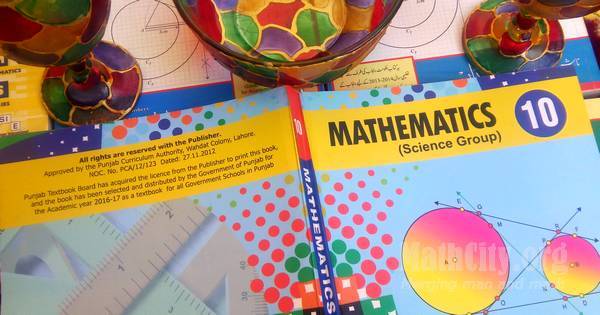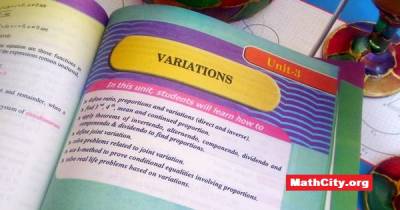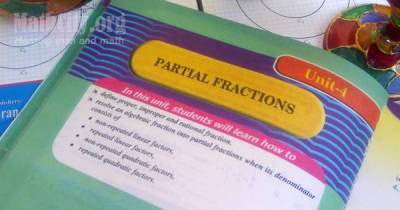Mathematics 10 (Science Group)
 The notes/solutions, definitions, MCQs and important question for Mathematics 10 (Science Group), published by Ilmi Kitab Khana, Urdu Bazar, Lahore, Pakistan are available on this page. Whenever we found the notes we will update this page and will upload notes here. If you wish to contribute and send us the notes please contact us via our About Us page.
The notes/solutions, definitions, MCQs and important question for Mathematics 10 (Science Group), published by Ilmi Kitab Khana, Urdu Bazar, Lahore, Pakistan are available on this page. Whenever we found the notes we will update this page and will upload notes here. If you wish to contribute and send us the notes please contact us via our About Us page.
Definitions
On this page, definitions from the book “Mathematics 10 (Science Group) (Matric)” are given.
- Definitions by Amir Shehzad | Download PDF
- Definitions by Bahadar Ali Khan | definition-10th-science-bahadar-ali-khan.pdf
MCQs: Complete Book
These MCQs was sent by Amir Shehzad, we are very thankful for his contribution.
Unit 01: Quadratic Equations
These notes are send by Ms. Amir Shehzad, we are very thankful to him for sending these notes.
In this unit students will learn how to
- define quadratic equation
- solve a quadratic equation in one variable by factorization
- solve a quadratic equation in one variable by completing square.
- derive quadratic formula by using method of completing squaire.
- solve a quadratic equation by using quadratic formula.
Solutions
Unit 02: Theory of Quadratic Equations
These notes are send by Mr. Amir Shehzad, we are very thankful to him for sending these notes.
In this unit students will learn how to
- define discriminant $(b^2-4ac)$ of quadratic expression $ax^2+bx+c$.
- find discriminant of a given quadratic equation.
- discuss the nature of roots of a quadratic equation through discriminant and verify the results by solving the equation.
- determine the nature of the roots of a given quadratic equation and verify the result by solving the equation.
Solutions
Unit 03: Variations
 These notes are send by Ms. Maryam Jabeen, we are very thankful to her for sending these notes.
These notes are send by Ms. Maryam Jabeen, we are very thankful to her for sending these notes.
In this unit students will learn how to
- define ratio, proportions and variations (direct and inverse).
- find 3rd, 4th, mean and continued proportion.
- apply theorems of invertendo, alternendo, componendo, dividendo and compnendo and dividendo to find proportions
- define joint variation.
- solve problems related to joint variation.
- use k-method to prove conditional equalities involving proportions.
- solve real life problems based on variations.
Solutions
Unit 04: Partial Fractions
These notes are send by Ms. Maryam Jabeen, we are very thankful to her for sending these notes.
In this unit, students will learn how to
- define proper, improper, rational fraction.
- resolve an algebraic fraction into partial fractions, when its denominator consist of
- non-repeated linear ffactor,
- repeated linear factor,
- non-repeated quadratic factors
- repeated quadratic factors.
Solutions
Unit 05: Sets and Functions
These notes are send by Mr. Amir Shehzad, we are very thankful to him for sending these notes.
In this unit students will learn how to
- sets
- recall the sets denoted by $\mathbb{N}$, $\mathbb{W}$, $\mathbb{Z}$, $E$, $O$, $P$ and $\mathbb{Q}$.
- recognize operation on sets ($\cup$, $\cap$, $\setminus$,…)
- perform operations in set union, intersection, difference, complement.
- give formal proofs of the following fundamental properties of union and intersection of two or three sets
- commutative property of union.
- commutative property of intersection.
- associative property of union.
- associative property of intersection.
Solutions
Unit 06: Basic Statistics
These notes are send by Mr. Amir Shehzad, we are very thankful to him for sending these notes.
In this unit students will learn how to
- construct grouped frequency table.
- construct histograms with equal and unequal class intervals.
- construct a frequency polygon.
- draw a cumulative frequency table.
- measure range, variance and standard deviation.
Solutions
Unit 07: Introduction to Trigonometry
After studying this unit, the students will be able to:
- measure an angle in degree, minutes and second.
- convert an angle given in degrees, minutes and seconds into decimal form and vice versa.
- define a radian (measure of an angle in circular system) and prove the relation between radians and degree.
- establish the rule $l=r\theta$, where $r$ is the radius of the circle, $l$ is length of circular arc and $\theta$ the central angel measured in radian.
- prove that the area of a sector of a circle is $\frac{1}{2}r^2 \theta$
The following Solutions was send by Amir Shehzad. We are very thankful to him for sending these notes.
- Solutions | Download PDF

Unit 09: Chords of Circle
In this unit students will learn:
- how to prove the following theorems alongwith corollaries and apply them to solve appropriate problems
- One and only one circle can pass through three non collinear points.
- A straight line drawn from the centre of a circle to bisect a chord (which is not a diameter) is perpendicular to the chord.
- Perpendicular from the centre of a circle on a chord bisects it.
- Two chords of a circle which are equidistant from the centre are congruent.
Solutions
The following theorems was send by Bahadar Ali Khan. We are very thankful to him for sending these notes.
- Important Theorems | Download PDF |

